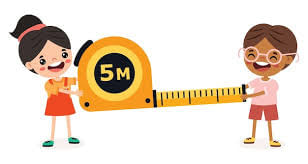Class 8 Exam > Class 8 Notes > Year 8 Physics (Cambridge) > Measuring motion
Measuring motion | Year 8 Physics (Cambridge) - Class 8 PDF Download
Measuring Distance and Time
- Distance: The amount of space between two points. It is measured in units like meters (m) or kilometers (km).
- Time: The duration between events, measured in seconds (s), minutes (min), or hours (hr).

Speed and Average Speed
- Speed: How fast an object is moving. It is calculated as distance divided by time.
- Example: A car travels 100 kilometers in 2 hours. Its speed is 50 km/h (kilometers per hour).
- Average Speed: Total distance traveled divided by total time taken.
- Example: A runner covers 400 meters in 80 seconds. Average speed is 5 m/s (meters per second).
Question for Measuring motionTry yourself:A bike travels 60 kilometers in 3 hours. What is the speed of the bike?
View Solution
Distance-Time Graphs
- Graphical Representation: Shows how distance changes over time.
- Types of Graphs:
- Constant Speed: Straight line on the graph (diagonal line).
- Changing Speed: Curved or zigzag lines indicate changes in speed.
Examples to Understand Concepts
Example 1: A cyclist rides at 20 km/h for 1 hour. How far does the cyclist travel?
Sol: Distance = Speed × Time = 20 km/h × 1 hr = 20 km.
Example 2: A train accelerates from rest to 80 km/h in 30 seconds. Calculate its acceleration.
Sol: Acceleration = Change in Speed / Time = (80 km/h - 0) / 30 s = 2.67 km/h/s.
Key Points to Remember
- Speed: Rate of motion; calculated as distance divided by time.
- Average Speed: Total distance divided by total time.
- Distance-Time Graphs: Show how distance changes with time.
- Examples: Practical applications help in understanding calculations and concepts.
The document Measuring motion | Year 8 Physics (Cambridge) - Class 8 is a part of the Class 8 Course Year 8 Physics (Cambridge).
All you need of Class 8 at this link: Class 8
|
8 videos|39 docs|11 tests
|
FAQs on Measuring motion - Year 8 Physics (Cambridge) - Class 8
| 1. How can distance and time be measured in the context of motion? |  |
Ans. Distance can be measured in meters or kilometers, while time can be measured in seconds, minutes, or hours. The combination of these measurements helps determine the speed of an object in motion.
| 2. What is the difference between speed and average speed? |  |
Ans. Speed refers to how fast an object is moving at a specific instant, while average speed is calculated by dividing the total distance traveled by the total time taken. Average speed provides a more comprehensive view of the object's overall motion.
| 3. How are distance-time graphs used in measuring motion? |  |
Ans. Distance-time graphs depict the relationship between distance and time during an object's motion. The slope of the graph represents the object's speed, while a horizontal line indicates the object is at rest.
| 4. What are some common units used to measure speed in the context of motion? |  |
Ans. Speed is commonly measured in meters per second (m/s), kilometers per hour (km/h), or miles per hour (mph) depending on the context of the motion being observed.
| 5. How does understanding the concept of speed and distance help in analyzing motion? |  |
Ans. Understanding speed and distance allows for the calculation of various motion-related parameters, such as acceleration and velocity. This knowledge helps in analyzing and predicting an object's motion in different scenarios.
Related Searches
















